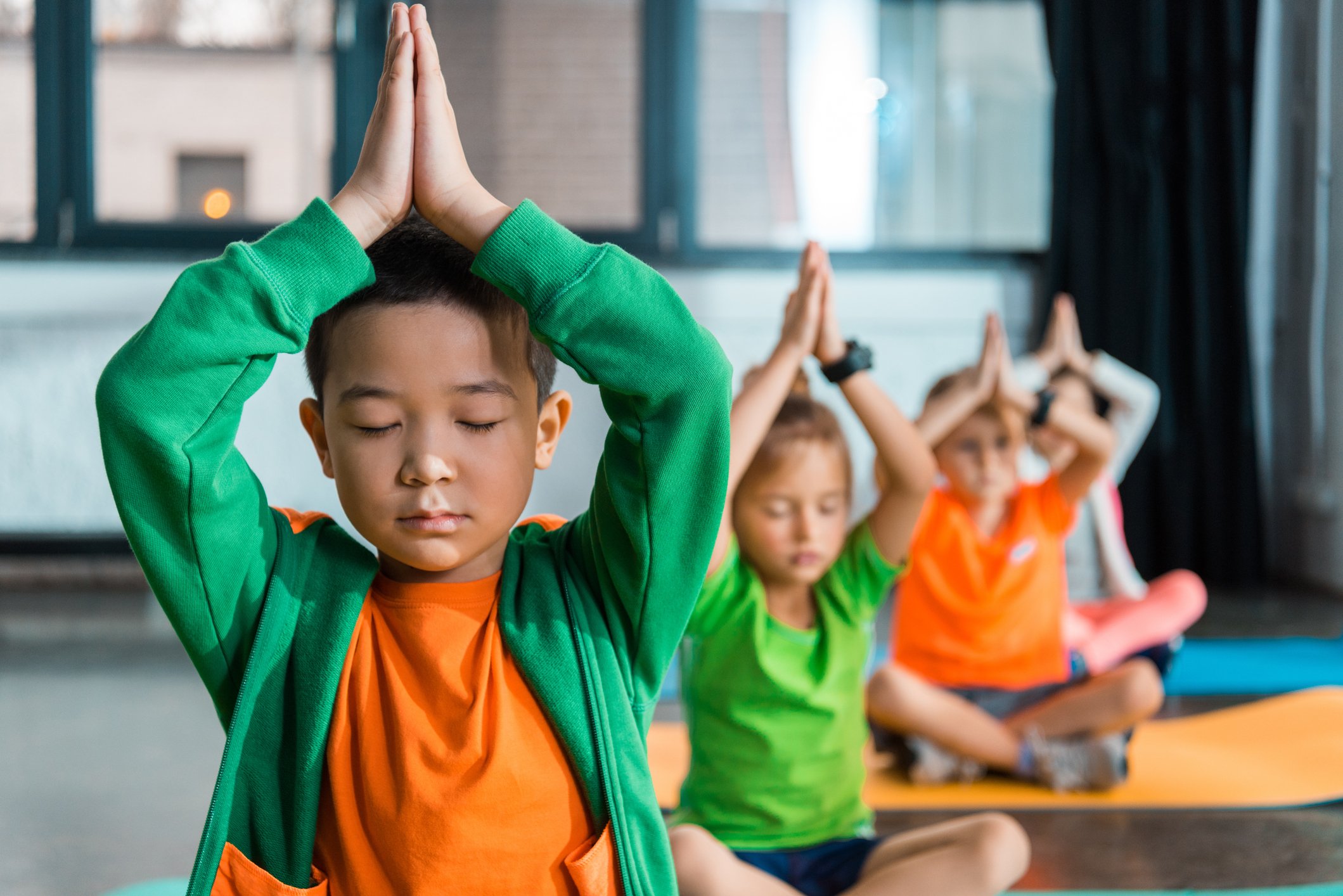YOGA FOR CHILDREN and Teenagers
We all know that stress management starts from an early age, yoga for children helps to understand emotions, regularize behaviours and find a space where the child feels safe. The approach is playful, it is simple and attractive using images, games, nursery rhymes (for the little ones) and challenges for the older ones. Yoga is non-competitive, collaborative and encourages body awareness. The child learns through the different exercises of movement and breathing to socialize with the others of his class, but also to focus on his own yoga mat, create his own inner bubble. Yoga evolves with the child, his cognitive and social abilities. In adolescents; Yoga helps to improve self-esteem and motivates it to take on new challenges.
Mindfulness for Children and Teenagers
Each child is unique, he has his own inner language, mindfulness exercises for children and teenagers allow him to discover his full potential. Breathing and conscious movements are part of our approach to accepting emotions as they present themselves and observe the nature of change; such as a weather report.
yoga In school
Yoga in schools in the current context is essential to the physical and psychological well-being of the child. In response to the societal epidemic of lack of physical activity and screen addiction from an early age, yoga has become an essential window for the well-being of our children.
It’s a fun practice! Non-competitive and facilitates physical activity. Yoga can bring the foundations of body awareness, personal self-discovery, respect for oneself, others, the environment, which will serve them all their lives.
Yoga is different from other disciplines, by its ancestral roots, it evokes mystery and awakens curiosity in the child. The child learns through the different postures (asanas) to develop new skills.
Through observation and the connection between the body, breath and mind, the benefits can be felt even after the first session. This helps the child to self-regulate by calming the mind, refreshes the body and brings the reflex of relaxation and pleasure.
Yoga helps the child understand their body and how it works. Asanas are fun, but also bring a challenge. Yoga adapts to all body types, skills and ages, it can easily be taught to children in wheelchairs or reduced mobility.
Yoga promotes learning in schools and adapts to all classroom environments.
yoga in daycares
Yoga in daycares adapts to the child and his abilities. It starts from the nursery to the age of pre-kindergarten. Yoga is evolutionary and playful, it stimulates multiple intelligence: verbal—linguistics, logical—mathematical, visual and spatial, body and kinesiology, musical and rhythm, interpersonal. The intrapersonal and the naturalistic.
Classes are prepared with integrity and respect according to the children’s abilities. The Champa yoga program is based on creative themes that feed the child’s imagination. Each posture is first demonstrated in silence and then following music or nursery rhymes appropriate to the age of the child.
The structure of the yoga classes follow a routine according to the ages which allows the child to find his bearings: first elements: the warm-up, second the technical exercise, third the repertoire practice (which will be repeated for three weeks). Fourth the return to calm, relaxation and shavasana.
Yoga in daycares helps the child in his autonomy; he learns to follow a routine, give objects to friends, stabilize in his yoga space [mat], join others in rounds and various group training, delimit his abilities to say no and yes according to the activities prepared.
Infants can also do yoga; indeed from the age of six months, the baby can imitate, make movements of gross and fine motor skills, he can learn to give and manipulate objects. He reacts to music and smiles.




